The Broken Roof Cave, Cist 1 atlatl
Justin Garnett, 2012
Section 1: The site
In 1921 a Harvard Peabody museum excavation team, led by Samuel James Guernsey made it’s way up the wash of the Chinle Creek in Northeastern Arizona. A twisting stream passing through flats and quicksand, the Chinle wash and it’s side-canyons stretch 65 miles from Apache county Arizona until it reaches the San Juan river in southern Utah. Along the flanks of this valley system can be found alcoves and caves, one of which, not far up a side canyon near the Utah border, came to be called “Broken Roof Cave”.
Named for the frequent rock falls from the cave roof which threatened Guernsey’s team, Broken Roof Cave is a rockshelter 75 feet tall, 75 feet deep and 150 feet in length. The cave is situated atop a talus slope composed of rockslide debris which periodically ushers forth from the cave mouth. Following one such devastating rock fall and rockslide, the Peabody team decided to move on, as to continue excavations would be too dangerous to be worthwhile.
Diggings at Broken Roof Cave yielded many artifacts in exceptional states of preservation. The Human burials dated to Basketmaker II, and were accompanied by typical grave goods-In cist 1, that of a ~40 year old male and four infants, were found three atlatl dart foreshafts with stone points in place, and the atlatl which is the subject of this article.
Section 2: The Atlatl:
Figure 1: Guernsey’s original photos of the artifact. Digitized by Google, watermarks retained.
The atlatl (figure 1) was described by Guernsey in his site report as being the finest yet (in 1931) recovered by the Harvard Peabody Museum in their excavations. This is still true-the Broken Roof Cave atlatl is one of the finest preserved Basketmaker atlatls known. In the summer of 2010 I personally examined the weapon, and would feel confident in it’s ability to cast darts even today. The wood is oak (Likely Gambel oak, Quercus gambelii) still hard, well polished and nearly unstained by time-even the hide of the finger loops is still pliable and soft to the touch. Measurements of the weapon are to be found in table 1.
Table 1: Atlatl dimensions.
The atlatl is as well crafted as it is preserved. The surface exhibits faint tool marks, but has been well burnished. The shape of the shaft is beautifully executed and extremely symmetrical. The trough is deep and well outlined, and actually passes out the back of the shaft-at the base of the spur, a tiny pinhole of light can be seen through the shaft. Lashed to the shaft with sinew strips are a large well-shaped and polished loaf-shaped stone, approximately 2 ounces (Guernsey 1931), a smaller worked selenite pebble and a large seed. The latter two items are tied just above the fingerloops.
Figure 2: Fingerloop detail drawings by author. Not scaled to one another.
Of particular interest are the fingerloops (Figure 2). These are made of a long strip of hide which has been folded around a second, narrower strip to produce a three-ply strip. This three-ply strip is sliced or perforated at it’s middle, and slid up the handle (Which is truncated-4.5cm in length). This is then bound in place by a cross of sinew strips, which is wound around the shaft in a figure-8 arrangement to avoid crossing over the hide on the dorsal side of the atlatl. This wrapping is bound to a set of grooves, the exact nature of which can only be guessed at (these cannot be seen as they are covered by the intact fingerloops), although it is clear that this sinew cross-binding arrangement serves as the primary attachment point of the loops, bearing most of the stress of the throwing motion (This is because the truncated handle is of no use for adding leverage in the throw, thus all force in the cast is borne by the finger loops). The loops proper are formed by folding the three ply strip up the shaft to meet with the hide where it is bound to the shaft as described above, sewn in place with sinew cordage through the 6 plies of hide formed by the folding of the strip, and the sections of the strip protruding above the loops proper sewn to the shaft of the atlatl with additional sinew cordage-the loose ends of which are tied in knots to prevent their slipping through the perforations through which they pass. This arrangement is set above a lateral constriction in the shaft, to prevent it’s slippage and (presumably) decrease the width of the atlatl at that point. Interestingly, the sinew cordage binding the upper “tabs” of the loops to the shaft passes across the shaft, not around it-the tabs are sewn to each other, not secured to the shaft of the atlatl. Also notable is an additional flap of leather which is somehow inserted into the cordage passing between the loop-tabs on the dorsal side of the atlatl. This is then folded over the cordage and secured in place with a sinew binding which incorporates the afore mentioned seed. This tab appears to be a non-functional element, and is likely cosmetic.
Section 3: Discussion
Figure 3: Replica of the Broken Roof Cave atlatl, in Gambel Oak, by the author.
Figure 4: Broken Roof Cave atlatl at the ready.
The Broken Roof Cave atlatl is in an exceptional state of preservation and shows great sophistication and refinement of form. It is one of the finest surviving examples of a Basketmaker atlatl. Despite the exceptional preservation of the atlatl itself, nothing is known about the darts which would have accompanied it as a set. The safest bet for reconstructing a matching set is the use of darts of the dimensions indicated by the matched atlatl and dart assemblage recovered by Guernsey and Kidder at White Dog Cave, Arizona. These darts appear to be typical of those used by the Basketmaker Culture. A major shortcoming to this strategy is that the method of throwing these two sets would likely have differed somewhat-the Broken Roof Cave atlatl represents a classic truncated handle form atlatl, whereas the White Dog Cave atlatls were all of the “conventional” handle type (Pettigrew, 2012). Despite this dissimilarity, replica White Dog darts perform wonderfully with replications of the Broken Roof Cave atlatl (figures 3-6). The balance point, when coupled with these darts is in the vicinity of the handle tip, allowing for comfortable, near effortless throwing-tending to suggest that the White Dog darts are close proxies for those which would have been used at Broken Roof Cave.
Figure 5: Easy balance of system makes for comfortable, relaxed throwing.
Figure 6: Broken Roof Cave atlatl replica with White Dog cave type darts and generalized Basketmaker accoutrements.
Guernsey’s “Exploarations in Northeastern Arizona, report on the field work of 1920-1923” has been digitized by Google and made available online through the efforts of the Hathi trust. This document is free of copyright, and can be found at the following location:
http://babel.hathitrust.org/cgi/pt?id=inu.30000007186384
References:
Garnett, Justin, 2011, Function of Added Weights in Throwing Dynamics of the “Floating Grip”: Added Weight as a Modifier of Effective Dart-Spine”, Electronic document, http://basketmakeratlatl.com/?page_id=125, accessed May 15, 2012.
Guernsey, Samuel James, 1931, “Explorations in Northeastern Arizona, report on the fieldwork of 1920-1921″, Harvard peabody papers, Cambridge MA
Pettigrew, Devin, 2012, “Atlatl Weights: A function of preference for specific gripping and throwing techniques”, Electronic document, http://basketmakeratlatl.com/?page_id=418, accessed May 15, 2012.


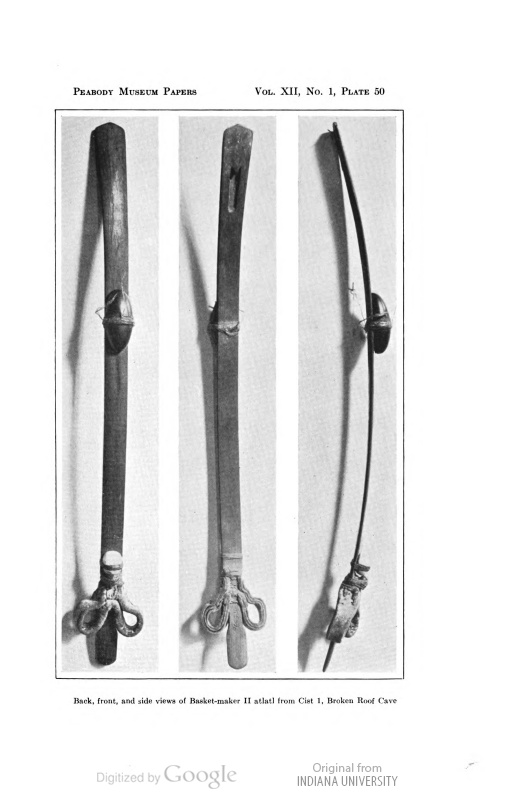


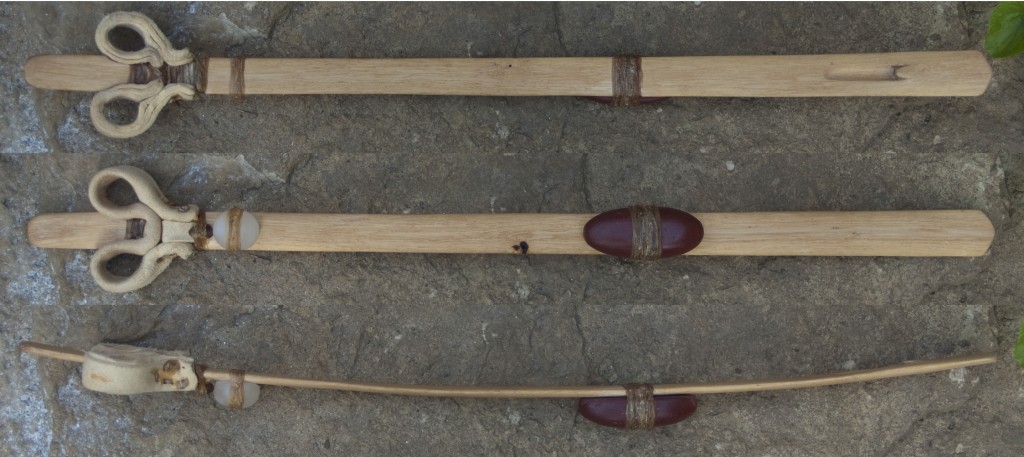
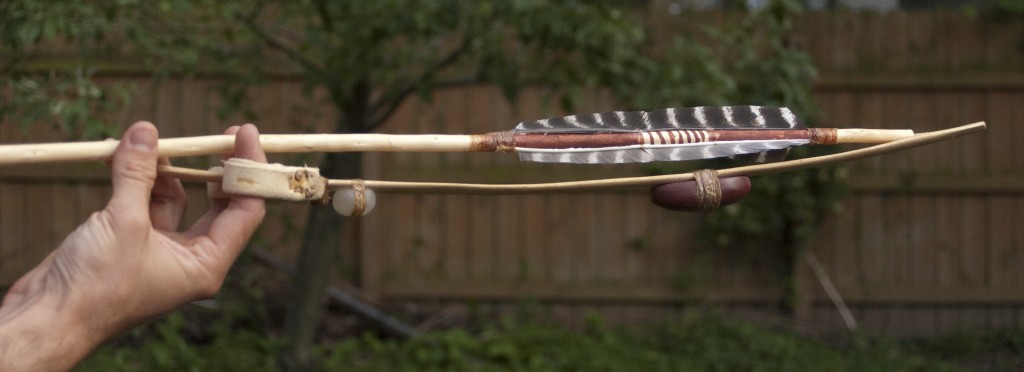
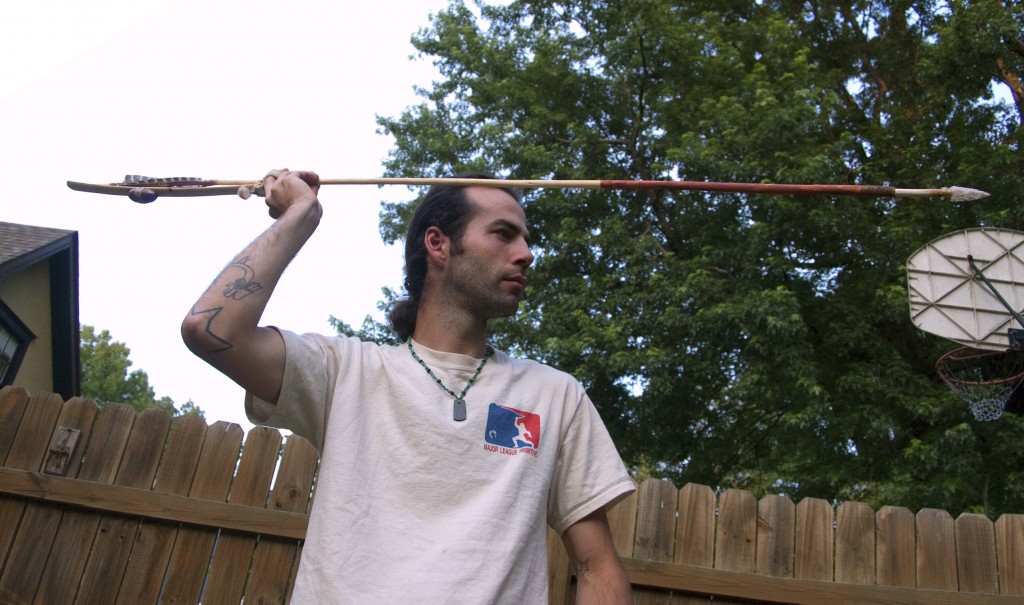
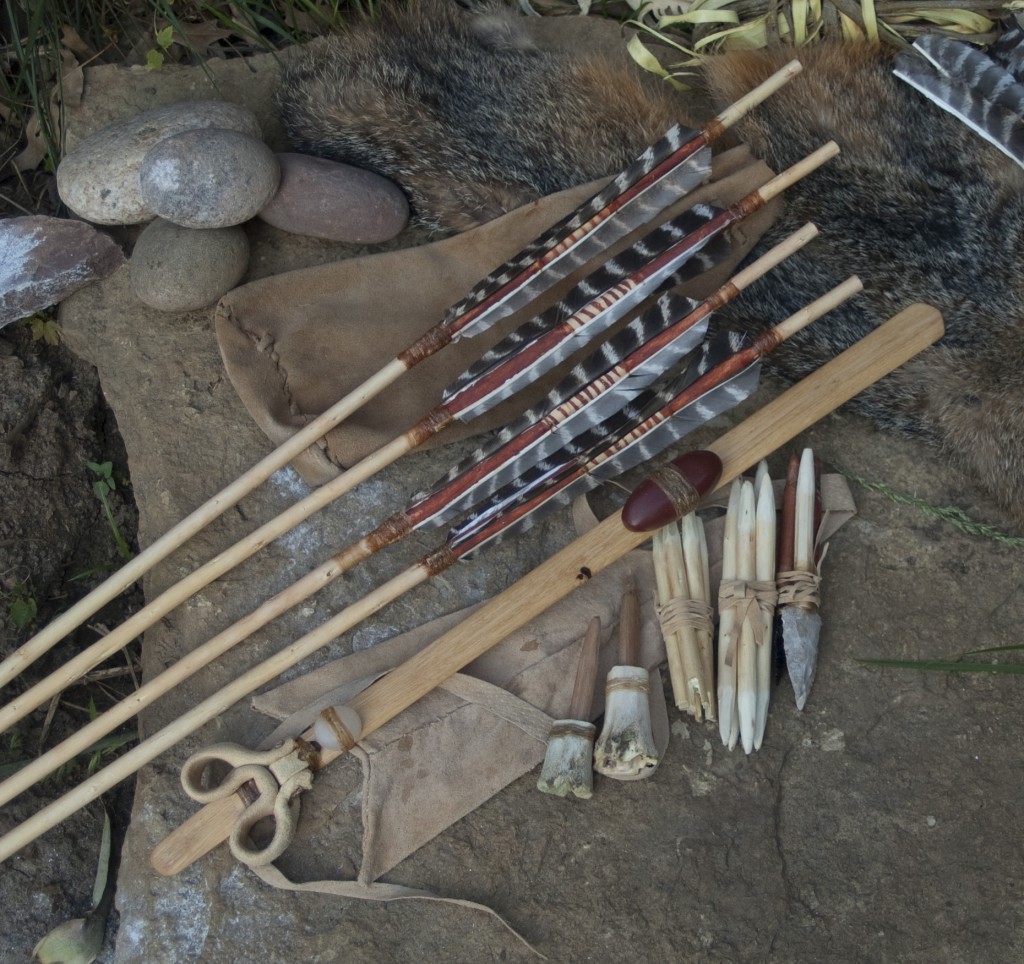
8 Responses to Broken Roof Cave, Cist 1, Arizona